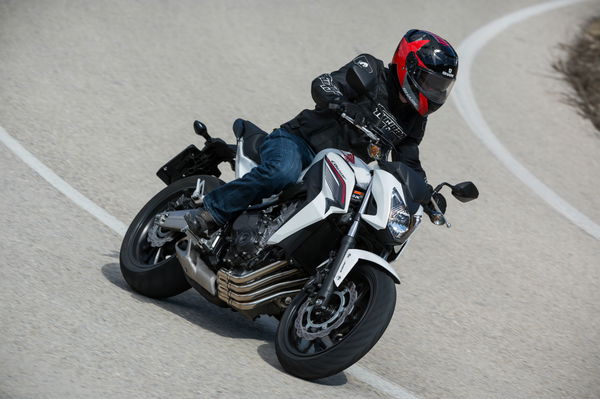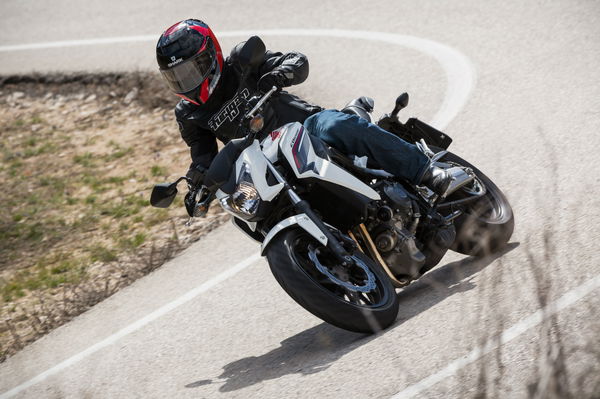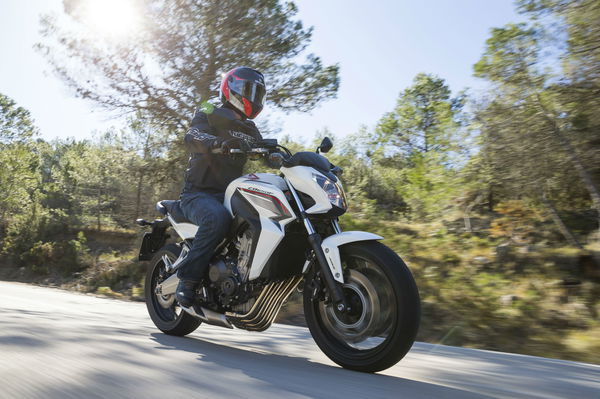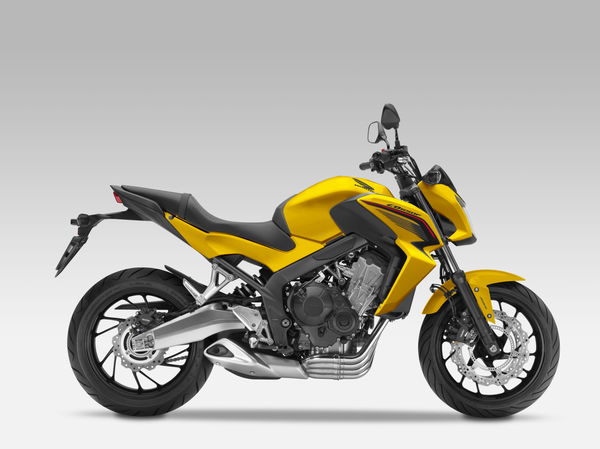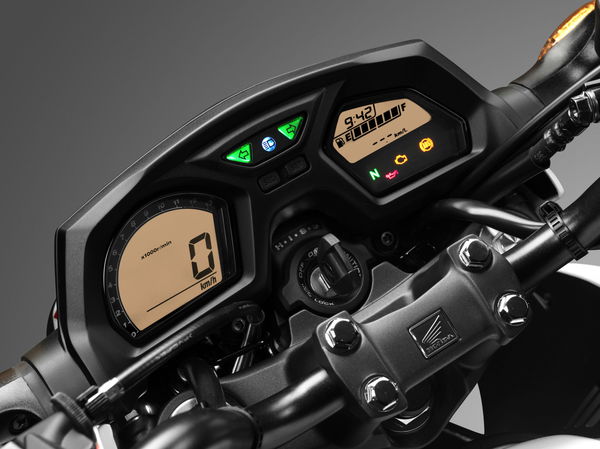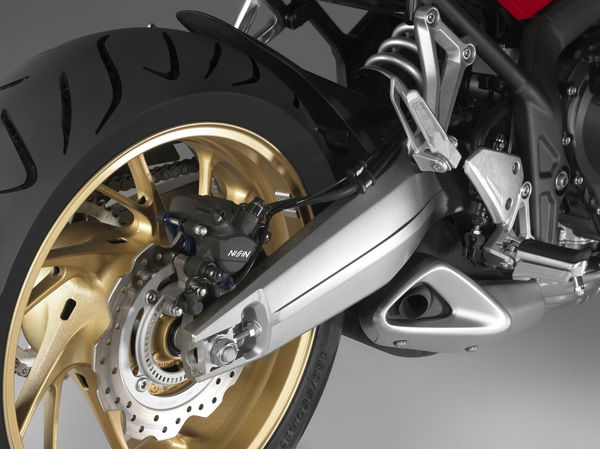First ride: Honda CB650F review
The CB650F is Honda's latest bid to excite existing motorcyclists while also attracting new ones. It manages the former. Let's hope it does the latter.
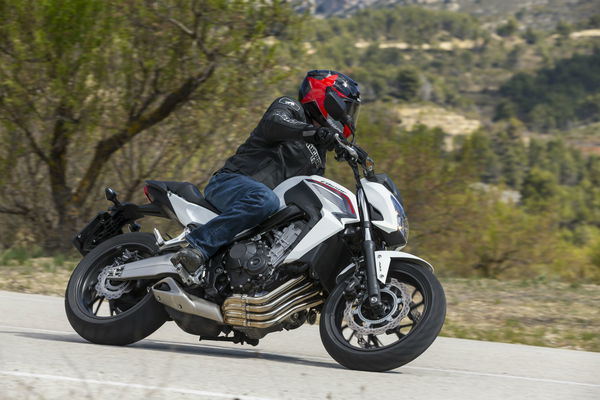

IT felt a little underwhelming when Honda announced the CB650F in November, a replacement for the popular Hornet 600 but making 14hp less.
It's one of two new models using the same engine and frame, the other being the fully-faired CBR650F.
But isn't power supposed to increase with development? So we've come to expect as motorcyclists.
Here is the CB650F's trick. Honda isn't aiming it at motorcyclists, or at least not just at motorcyclists.
In a shrinking market, Honda has a clear strategy for future prosperity, and it consists of luring non-motorcyclists.
The plan's clear in Honda's NC750 range, every aspect of which seems designed to be inclusive of newcomers, from the car-like power delivery to the handy luggage compartment where the tank would normally be.
And although the CB650F comes with more attitude, it's clear in that too.
Look at that bit of rubbery plastic stuck on the tank. Many motorcycles, unless you want them immediately scratched, need an accessory tank protector fitted before they even leave the showroom. As motorcyclists we for some reason accept this, but it's actually an inherent flaw, which non-motorcyclists might object to. Honda seems to have acknowledged this by giving the CB650F it's own tank protector as standard equipment.
Then there's the size of the CB650F. At the launch in Alicante, Honda presented the all-new 649cc in-line-four engine out of the frame, to show us how compact it is. To be fair, it looked small enough to stick under an arm and walk out with.
The oil filter is beneath instead of in front of the engine, so the exhaust pipes can hug the unit more closely.
The steel frame, which is also new, has squashed oval main tubes, making them and the bike narrower.
The CB650F is tiny. It feels like a four-cylinder 400 from the Nineties. That helps make it hugely confidence inspiring and flattering to ride.
Honda says the rider sits close to the bike's centre of gravity. It feels that way, almost supermoto-like, with your body over the wide bars, which are easy to boss around with precision in corners because of the leverage they offer.
It creates the impression of a short wheelbase. In fact, at 1,450mm, the Honda's is 10mm longer than that of Yamaha's four-cylinder naked 600, the XJ6.
Nevertheless the CB650F has the agility that comes with minuscule dimensions.
Although peak torque is slightly down compared to the Hornet, at 46.4lbft instead of 46.8, Honda says the CB650F has more low-down torque. I couldn't swear that was evident. Typically of 600s, at least the four-cylinder variety, the CB needs to be revved to go. Power builds smoothly from low revs but if you're in a hurry out of a corner you'll want to keep it above 5,000rpm.
Lower down it's forgiving and unintimidating, in keeping with Honda's strategy of including the uninitiated. The good news is, that's not to say it isn't also a lot of fun for the established motorcyclist.
Revved hard – and it likes to be revved hard – the CB650F becomes something else, and has the agility and legs to hassle more powerful machines.
Peak power is at a fairly high 11,000rpm, and peak torque at 8,000. Drive and urgency just keeps building as the needle climbs, accompanied by a decent, angry four-cylinder whine from the exhaust. Let's face it - 87hp is still a lot more than most of us use most of the time.
And the CB650F wants you to use it. Throwing its diminutive frame through twisty mountain roads, it encourages you to push it harder, and to work the gearbox for the power.
The suspension is firm and competent. The shock has adjustable preload. The fork is non-adjustable. Both work well as they are and, in any event, new riders would probably rather not have to choose their own settings.
The span-adjustable brake lever and twin front discs are powerful enough to operate with a single finger but progressive enough to make input easily controllable.
The steering lock is generous, making for easy u-turns. The riding position and size of the machine also aid low-speed manoeuvring confidence.
It's unlikely to be a coincidence that the lower peak power figure makes the bike eligible to be restricted for new riders.
Under the rules, holders of A2 motorcycle licences, which is all riders aged 19 to 21 can get, are limited to 48hp. They can ride a bike that's been restricted to that level but only so long as it didn't make more than double it to begin with. At 101hp, the Hornet 600 was out.
Honda isn't offering a 48hp version of the CB650F for the UK but aftermarket restrictor kits will be produced so it's clear that, by lowering the power slightly, its market has expanded to include potentially thousands of newer riders.
Honda is fairly unequivocal about its aim. A press officer on the launch said its marketing strategy included two key thrusts: 'get on', as in get new riders on bikes, and 'get back on' as in persuade those who've left to come back. The strategy was evident from those present, who included three national newspaper correspondents, a clear bid to reach non-riders. Usually there is at most one UK national press representative on bike launches.
If an effect of that strategy is solutions to perennial motorcycling problems such as standard-equipment tank protectors, all the better for us.
The CB650's finer details don't stop with that. Attaching luggage to the pillion seat should be easy because there are four points to hook bungee cords to: two hooks by the passenger grab rail and two fold-away fabric loops on the underside of the seat.
There's space under the seat for a disc lock, and you get a wire cable-type helmet lock.
The instrument panel includes average and current mpg. Honda claim 60mpg in typical use. On the launch ride I calculated 50mpg based on mileage between fuel stops.
The CB650F feels overall like one of Honda's higher-quality products. The shiny switches on the bars are shared with the VFR range, and look premium.
There are gratis styling details, including 'CB650F' written on the underside of the tail unit. No one will ever see it because it will immediately become covered in road muck, but owners will know it's there.
I'd like the model to be slightly cheaper. One of its closest competitors will be Yamaha's XJ6. Although down on peak power and torque, at 77.5hp and 44lbft, the XJ6 is also intended as an entry-level middleweight, and costs £300 less than the Honda, at £6,099.
But the Honda is an all-new model, not to mention a little more aggressive and exciting, so perhaps it warrants the higher price. It's certainly a convincing package, offering genuine excitement for experienced motorcyclists without frightening off would-be riders.
Will Honda's marketing drive at newcomers work? Who knows? It's a plan at least. With the average age of riders now 47 and rising almost by the year, it's nice to know someone has one.
Model tested: Honda CB650F
Price: £6,399
Power: 87hp
Torque: 46.4lbft
Kerb weight: 208kg
Seat height: 810mm
Colours: metallic black, metallic silver, white, yellow, white/blue/red (Tricolour)
